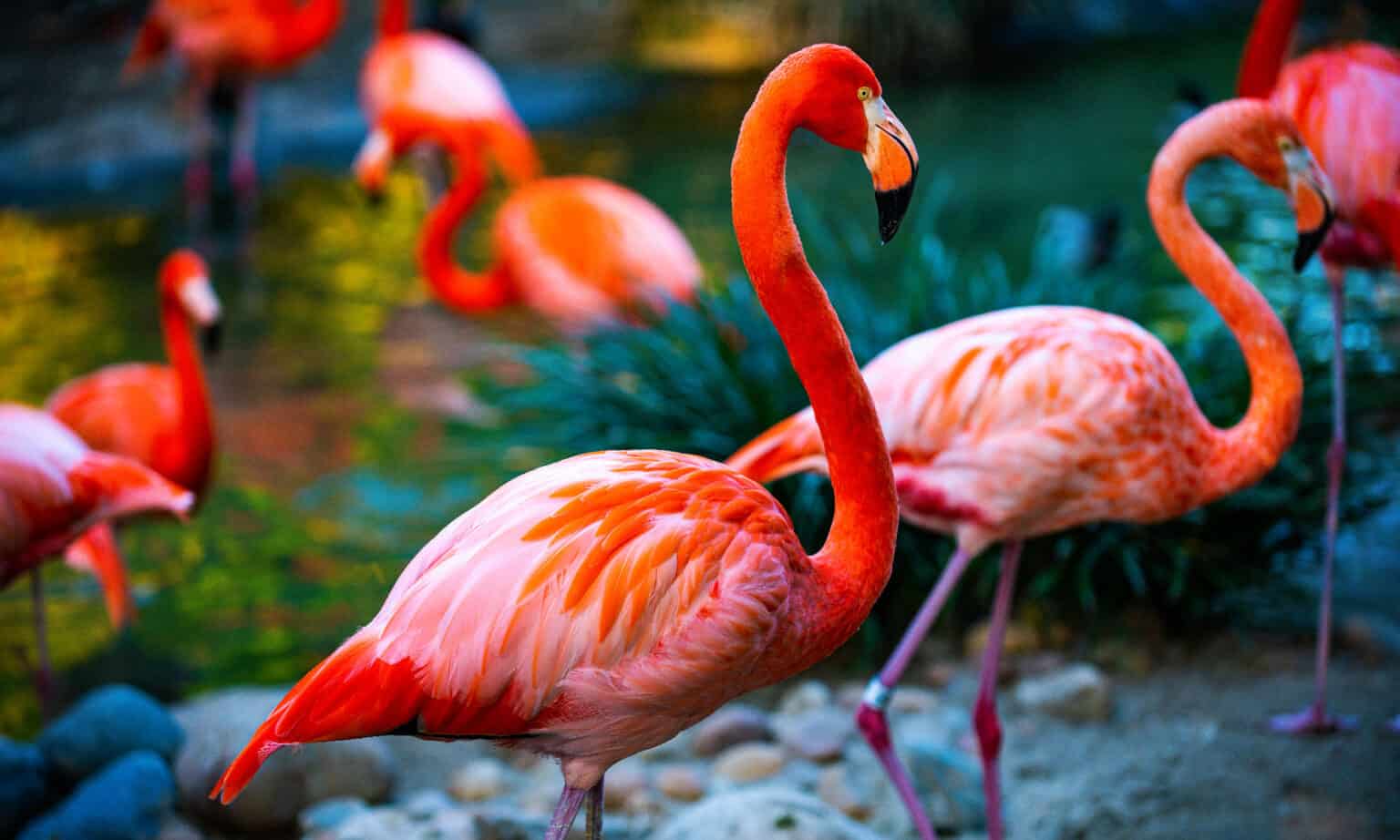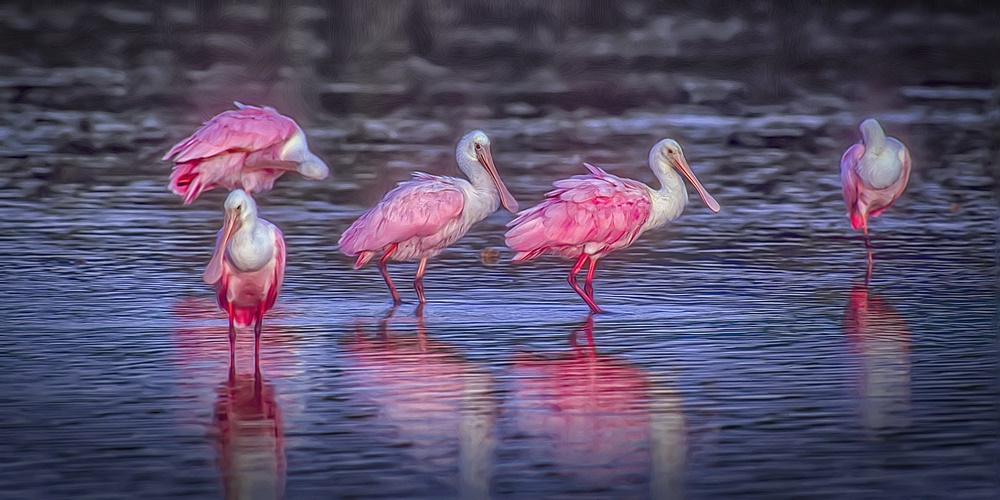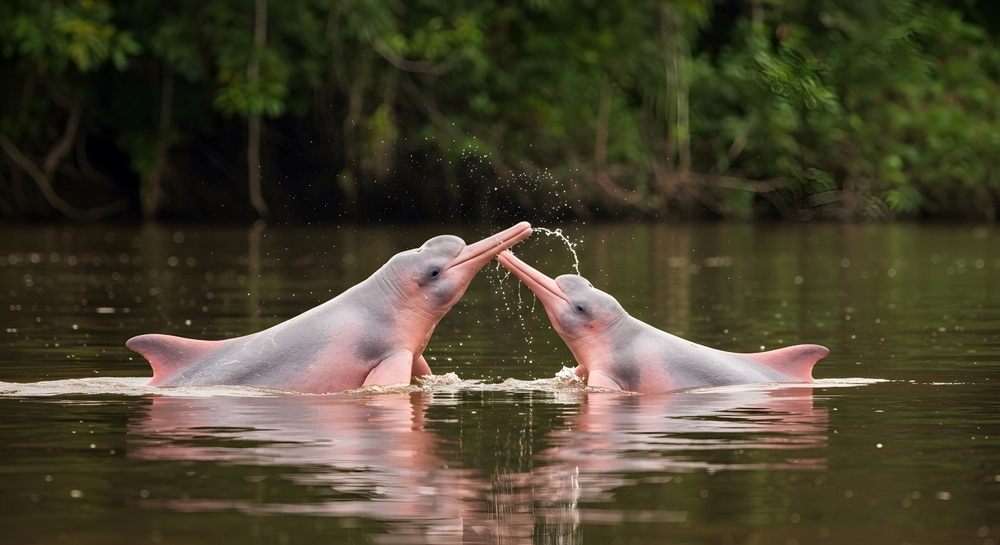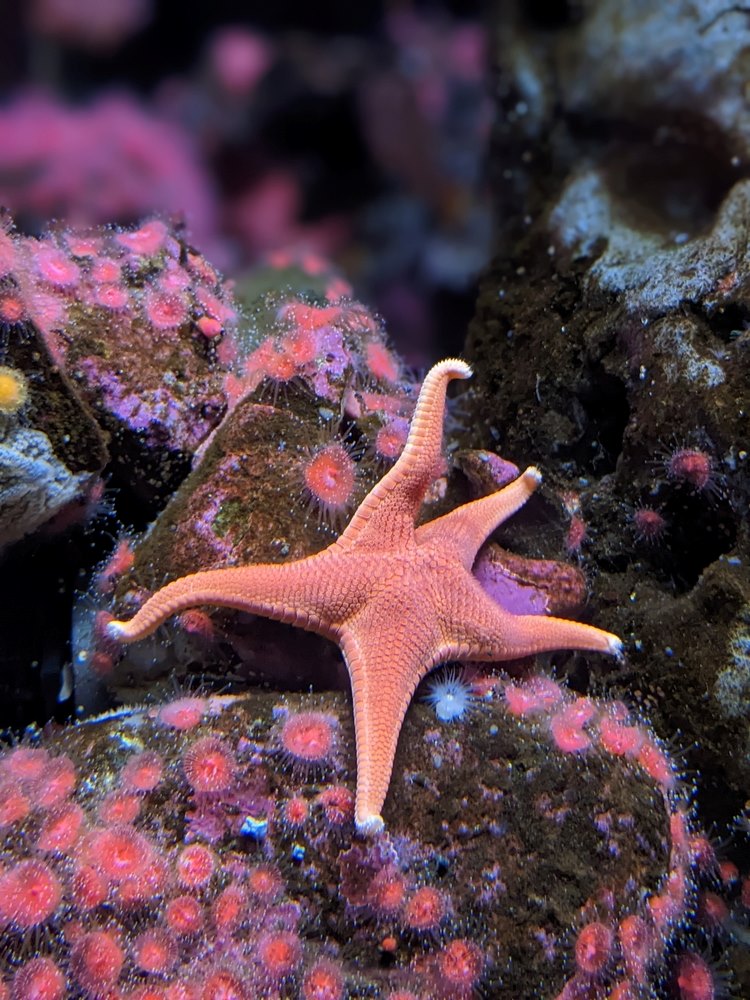Pink is not a very common colour in nature. Still, it has some unique and natural features that contribute to its glow, and it is very special due to its rare foundation in nature, its genetics, and mutations among different species. The animal of this beautiful colour shows the symbol of love, luck and beauty of nature.The rare combination of Pink Colour animals is found from India to South America and all over the world.
In this article, we will discuss the top 5 Rare Pink Animals that Show Nature's Unusual Colour.
List of Top 5 Rare Pink Animals that Show Nature's Unusual Colour
Animals |
|---|
| Flamingo |
| Roseate Spoonbill |
| Amazon River Dolphin |
| Axolotl |
| Sea Star (Pink Starfish) |
Brief Overview of the Top 5 Rare Pink Animals that Show Nature's Unusual Colour
1. Flamingo

Source: Shutterstock
Interesting Facts
-
Flamingo nests are constructed from mud, which resembles mini mud volcanoes, and both parents share responsibilities in building and incubating the nests.
-
Flamingos acquire their characteristic pink colouration from carotenoid pigments found in their diet of algae and brine shrimp.
-
These birds are filter feeders, consuming various small organisms from shallow waters by holding their heads "upside down" and using their bills to filter food.
-
A group of flamingos is collectively known as a "flamboyance," though other terms like "stand," "colony," and "pat" are also used.
-
There are six distinct flamingo species, varying in size, habitat, and rarity, with the Greater flamingo being the largest and the Lesser flamingo being the most abundant.
2. Roseate Spoonbill

Source: Shutterstock
Interesting Facts
-
The Roseate Spoonbill is a large, vibrant pink wading bird which is found in the Americas and the Caribbean. These birds are identified by their unique spoon-shaped bill.
-
It uses its sensitive bill to sweep through shallow waters, & they search for small fish, shrimp, and aquatic insects for their diet.
-
These social birds prefer to forage, nest, and roost in groups within wetlands, mangroves, and coastal areas.
-
The rare colour of pink comes from their diet of crustaceans, and with age.
-
This species is only found in the western hemisphere, and despite being hunted in olden days, they have now all been recovered, and now they are now commonly found.
3. Amazon River Dolphin

Source: Shutterstock
Interesting Facts
-
The Amazon River Dolphin, which is also called “boto”, is a freshwater cetacean, which is commonly found in the Amazon and Orinoco basins. It is notable for its pink colour, long beak, and flexible neck.
-
Unlike other oceanic dolphins, it has a hump instead of a dorsal fin and they uses echolocation to navigate and hunt in murky waters.
-
The Amazon River Dolphin has been classified as Endangered by the IUCN due to various threats from human poaching and hunting, or from natural occurrences, or due to climate change.
-
Major threats include habitat alteration from dam construction, mercury poisoning from gold mining, and accidental entanglement in fishing gear.
-
The health of the Amazon River dolphin population is a vital indicator of the overall health of the river ecosystem.
4. Axolotl (Mexican Walking Fish)
-1759898443029.jpg)
Source: Shutterstock
Interesting Facts
-
Axolotl is also called Mexican Walking Fish; however, in reality, they are amphibians.
-
The axolotls are interesting salamanders that have an unusual condition known as neoteny or retention of juvenile characteristics. They are on the verge of extinction, and their population has greatly depleted.
-
They live on Mexico City Lakes Xochimilco and Chalco. The axolotls are generally wide-headed, short-limbed, gill-feathered, and have a dorsal fin. Wild axolotls are darker, although they are often viewed as white in captivity.
-
These meat eaters consume by suctioning the worms, insects, and small fish, and they may live up to 10-15 years. Their breeding season only lasts once a year, and the females may lay up to 1,000 eggs.
-
Axolotls are larger, aquatic, and not terrestrial like most other salamanders, and they live in high-altitude freshwater lakes in Mexico.
-
Water pollution, overfishing, loss of habitat and invasive species cause their decline. The issue that worries the scientists is that axolotls hold considerable biological importance, such as the capacity to regenerate limbs; their findings may help to inform human medicine.
5. Sea Star (Pink Starfish)

Source: Shutterstock
Interesting Facts
-
The pink starfish, Pisaster brevispinus, is a large, predatory sea star found in the Pacific Ocean off North America.
-
It is identified by its pink or lavender colour, soft texture, short spines, and can grow over 64 cm in diameter and weigh up to 4.5 kg.
-
Preferring calmer subtidal waters with muddy or sandy bottoms, its diet includes bivalve molluscs, which it consumes by everting its stomach into the prey's shell.
-
Pink sea stars reproduce sexually, releasing gametes for external fertilisation, and possess remarkable regenerative abilities.
-
While its population is believed to be stable, it faces threats from habitat degradation, pollution, and sea star wasting syndrome.
Conclusion
The rare pink animals—from flamingos to axolotls—reflect nature’s extraordinary diversity and beauty shaped by genetics, diet, and environment. These species not only captivate with their striking hues but also highlight the importance of conserving delicate ecosystems that sustain such unique life forms, symbolizing nature’s creativity and ecological balance.
Comments
All Comments (0)
Join the conversation